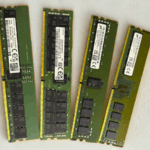With practically everything moving online, the need for data storage solutions has skyrocketed. Nowadays, businesses and other organizations need a robust storage solution to cope with their ever-increasing need for digital transformation.
However, choosing the right storage solution can be challenging with so many new technologies out there. In this guide, you’ll learn more about the current storage options available. We’ll also compare the two popular storage solutions to help you make an informed choice for your business.
Disk Storage vs. Cloud Storage: Which Is Better?
For some companies, disk storage is a better solution because it offers more privacy. For other companies, cloud storage is a better fit because of its affordability. Here is how these two storage options differ:
Disk Storage
Disk storage is a on-site digital storage solution that is directly connected to computers, servers, and other types of devices to form a storage network. With disk storage, data is stored on physical hard drives that reside on the company’s premises.
Pros
- Easy to set up
- Retain physical access
- Less risk of downtime
Cons
- Higher upfront costs
- Limited physical security
- Compliance issues
Cloud Storage
Cloud storage is similar to disk storage, but uses remote services. Data is not stored onsite, but instead transmitted over the internet via a secure connection. Users are able to access their files from anywhere.
Pros
- Less cost upfront
- Flexible expandability
- No hassles of server management
Cons
- Lack of total control
- Difficult to migrate
- Not as secure
Which Should You Choose?
The answer depends on various factors including your budget, industry, technology, compliance requirements, and risk tolerance. The ideal situation would be to combine both disk storage and cloud storage in your company. You could use local disks as security backups while keeping the rest of your information in the cloud.
Importance of Data Center Storage Maintenance and Hardware Support
A good data storage system will ensure functionality and security. It must be regularly maintained to keep it working well. There are several ways to maintain data centers, such as software updates, hardware upgrades, or power management.
A Ponemon Institute study found that the average cost of downtime is a staggering $336,000 an hour or $5,600 per minute! Data center downtime is a serious risk to business continuity as it disrupts workflow and communication.
It is important to have a single point of contact who can take charge when things go wrong or get delayed. At OSI Global, we are an industry leader in enterprise hardware, optical solutions, and professional services. We deliver expert advice, complete technical support, third-party maintenance, and hardware updates for your existing or new storage infrastructure. We can help you build your storage system with cutting-edge technologies and capable project management.
Whether you need hardware support for your storage area network (SAN) or migration services to move your infrastructure to a new data center platform, our managed services team can help you achieve your business goals while keeping your budget in mind.
👉 More: End-to-End IT Professional Services
Experience the OSI Difference with SYSTAIN
OSI Global’s Systain service is a centralized resource that allows our clients to take control of all their IT needs. It leverages the capabilities of the entire IT ecosystem – hardware, operating systems, applications, and networks – to provide actionable insights that enable faster time to resolution for system problems and help the client proactively identify risks and vulnerabilities before they cause disruptions to critical business processes.
We offer customized storage solutions from a wide range of OEM vendors at competitive prices. Our turnkey IT professional services include installation, configuration, integration, testing, and hardware support services.
Call us today at 1-866-602-4674 or contact us online to learn more about which storage solution is best suited for your organization.
[/et_pb_text][/et_pb_column] [/et_pb_row] [/et_pb_section]



